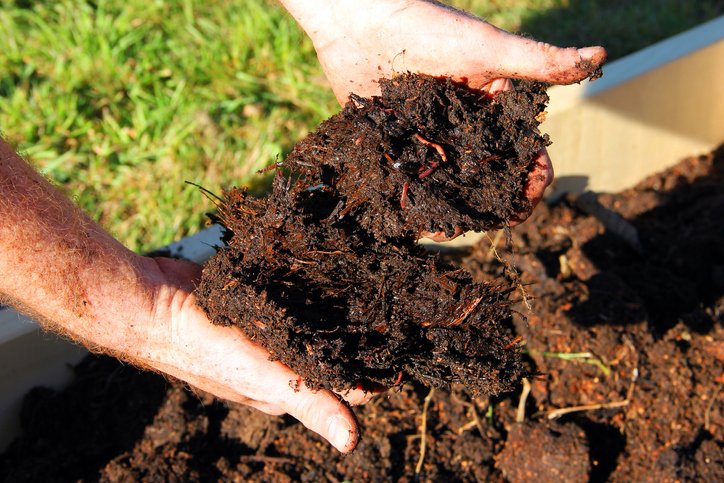Defining Organic
Discover > Farm to Table Eating in Texas > Defining Organic
The trend in food shopping nowadays has leaned towards being “organic” as the healthier way of eating. A lot of people jumped into this bandwagon and started becoming conscious of the things they put inside their bodies. For most, the term organic is just one more piece of information to interpret next to nutrition facts and ingredients list when grocery shopping.
What Exactly is "Organic"?
But what does “organic” exactly mean? Understanding what it really means empowers consumers to make informed decisions about the food they will purchase during their next trip to the market or grocery store.
The word "organic" refers to the methods used in growing and processing agricultural products. Organic foods certified by the USDA (United States Department of Agriculture) adhere to a set of government criteria. These federal guidelines address factors like soil quality, animal raising practices, use of additives, and pest and weed control management. These crops are the result of natural farming methods. They rely on natural ingredients and physical, mechanical, or biologically based farming methods. These crops were produced without using synthetic herbicides, insecticides, and fertilizers. As well as no growth regulators, livestock feed additives, and other genetically modified components or GMOs were used.
Difference Between Organic and Non-Organic
At the very core, visually and taste-wise, there is not much difference between organic and non-organic food. They look similar and taste very similar as well. Although in most cases, organic fruit and vegetables result in a more noticeable improvement in flavor because of their freshness.
The Major Difference Between Organic and Non-Organic Produce are the Farming Practices and Methods:
Manure and compost which are natural fertilizers are used to cultivate organic produce. Chemical fertilizers are used on conventionally grown crops.
Pest control in organic production uses natural methods such as a bird or insect trap and mating disruptions. If the need for pesticides arises, naturally-derived pesticides are used. In conventionally grown produce, synthetic pesticides are used.
Organic produce controls weeds naturally through crop rotation, hand weeding, mulching and tilling or with organic-approved herbicides. Conventionally grown produce uses chemical herbicides.
Organic livestock is given all organic and hormone-free and GMO-free feeds. Conventional livestock are given growth hormones to gain weight faster as well as non-organic, GMO feed.
With organic livestock, the disease is prevented with natural methods such as clean housing, rotational grazing and a healthy diet. While antibiotics and medications are used to prevent diseases for conventionally raised livestock.
Organic livestock have access to the outdoors, they have space to roam around. Conventionally grown livestock may or may not have access to the outdoors.
Does the "Organic" Label Justify the Price?
The price gap between organic and non-organic vegetables is another significant distinction. This might be one of the biggest roadblocks for most families when making a decision. Organic goods are usually more costly. The greater cost of manufacturing organic foods is one of the primary reasons for this disparity.
Organic farmers rely on more labor-intensive weed and pest control. This is because they cannot use synthetic pesticides, chemical fertilizers, or medicines. Organic farms also have smaller output than conventional farms. This implies that costs and overhead are divided among a smaller volume of products. In organic farming, farmers rotate their crops to keep the soil healthy, unlike in conventional farming which can use every acre of land. Organic farming also uses compost and animal manure as fertilizers which is bulkier and more expensive to ship. Another source of the additional expense is the organic certification and organic feeds for animals.
Another difference to note between the two is the seasonal availability. Conventionally-grown products may be available all year round while organic products are limited when they are not in season.
So is "Organic" Really Better?
So, is organic better? Shoppers may choose to purchase organic foods for a variety of reasons. If you are concerned about the environment, then buying organic is definitely the way to go. Some would choose to buy organic to avoid the risks associated with pesticides and other chemicals used in conventional farming. As well as bypassing the antibiotics and hormones given to conventionally-raised animals. Some people would definitely be discouraged by its price. Whatever your reason is, knowing what the label "organic" implies is the most powerful tool you have. Understanding the differences between organic and conventionally grown goods will help you make sound buying decisions. This information enables you to make informed decisions about nutrition, quality, taste, affordability, and other aspects in choosing what is best for you. Make your choice based on the reasons that matter to you.
*This is the third in an ongoing series that teaches homesteading in Texas. This is not a sponsored post although it may contain affiliate links to recommended products and/or services
Looking for tools, equipment, or other essentials to start you off on your homesteading journey? Check out BootStrap Farmer for some homesteading equipment that’s designed to last!
Looking for seeds? SeedsNow has an amazing selection of seeds to help you start off your homesteading journey right!
Go back to the previous article: Introduction to Soil Health
Move forward to the next article: Why Growing Organic is the Way to Go




